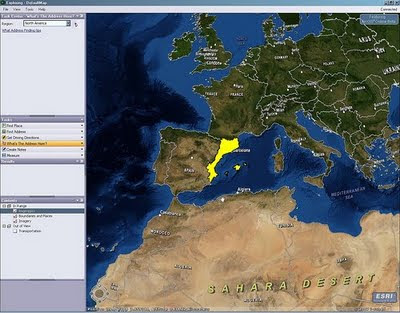
Friday, 13 November 2009
Armistice Day
Ninety-one years ago, November 11th 1918, in a train carriage in the Compiègne Forest, the Armistice between France and Germany was signed. Curiously, the place is not far from where the War had begun four years before. The signature of the Armistice meant the end of the hostilities in the Western Front and was signed by Marshall Foch, the Allied Commander-in-Chief, and Matthias Erzberger, representative for Germany.
The treaty observed the end of warfare in all remaining fronts at 11:00 hours of that day, hence the saying "eleventh hour of the eleventh day of the eleventh month", although the definitive peace between the Allies and Germany was not signed until a year later in Versailles, Paris. The Armistice established a monthly self-renewal clause unless Germany resumed hostilities, to which the Allies would respond in 48 hours.
Here is the account by Col. Gowenlock, who served as an intelligence officer for the US Army, and was at the front line that very same day.
"On the morning of November 11 I sat in my dugout in Le Gros Faux, which was again our division headquarters, talking to our Chief of Staff, Colonel John Greely, and Lieutenant Colonel Paul Peabody, our G-1. A signal corps officer entered and handed us the following message:
Official Radio from Paris - 6:01 A.M., Nov. 11, 1918. Marshal Foch to the Commander-in-Chief.
1. Hostilities will be stopped on the entire front beginning at 11 o'clock, November 11th (French hour).
2. The Allied troops will not go beyond the line reached at that hour on that date until further orders.
[signed]
MARSHAL FOCH
5:45 A.M.
Although Spain had remained neutral, there were Catalan volunteers fighting in the French Foreign Legion. The exact numbers are still uncertain. It had been speculated with figures between 10 and 20 thousand volunteers but following investigations by David Martinez i Fiol, who searched through Joan Soler i Pla's studies and French Foreign Legion archives, rather obscure and confusing, and concluded the real figure was 954 volunteers, including 48 Northern Catalans from Rosselló. Such discrepancy in the numbers would be caused by the Catalan nationalists willing to appear important, the conception that only anti-Catalan nationalists would negate the figures and the cruel death toll of the Influenza Pandemic of 1918, which was especially increased in Spain. Martinez i Fiol sustains that a mix up in the figures of both, along with more political reasons, had originated the discrepancy.
However meagre the number of volunteers might seem, the political repercussion within Catalonia was very notable. Important nationalist political figures of the time, Domènec Martí i Julià and Antoni Rovira i Virgili, among others, considered that Catalonia ought to have independent political relationships with the rest of the world to become independent from Spain. Even Francesc Cambó, leader of the "Lliga Catalanista" gave this cause some support, quickly withdrawn after taking possession of a Ministry in Madrid. Also, the French victory at the Battle of the Marne, 1914, which stopped the German advance in Europe, leaded by the Northern Catalan Marshal Josep(h) Joffre, made the Allied cause very popular among Catalans from the South of the border.
To help Catalan Volunteers in the Front, it was created the "Comitè de Germanor dels Voluntaris Catalans", supporting committees for the Catalan volunteers in the trenches. They even minted the "medal to the Catalan Volunteers", to be given to Catalan survivors of the War. Several Catalan politicians gave them support, but the death of J. Ferrés-Costa and Camil Campanyà during the Battle of the Somme, in 1916, the two more popular members of the contingent, frustrated the creation of a solid link among the soldiers and the politicians. The disturbances of the General Strike in Spain, the fall of the Unió Catalanista, the suspension of the Courts by Dato, the death of Martí i Julià and the Russian Revolution, all in 1917, decreased the popular support to the Volunteers too. The Russian Revolution caused the French High Command to be sceptical about the political aspirations of the Catalans, considering they were revolutionaries.
One of the Catalan personalties that took a significant support for the Allies was Francesc Macià. He covered the Battle of Verdun, late 1916, for the newspaper "La Publicidad" and gave the readers a very graphical description of the causes of the conflict, life in the trenches, and the destruction caused by the war. The months that Macià spent in France had great impact in his future political thought, strengthening his nationalism. The future Catalan President, and who proclaimed the Catalan Republic independent from Spain in 1931, returned to Catalonia certainly radicalised from what he had seen in France. Just a few years later, in 1922, Macià created Estat Català, the organization in which modern Catalan support for independence is based on.
In order to never forget who has given their lives in defence of democracy and freedom for Catalonia, to recognise the significance of a war that caused around 15 million dead and 21 million wounded, let this article be a small homage from Catalunya Acció to all who gave everything in "the war to end all wars".
Jordi Margalef i Turull
Catalunya Acció UK



